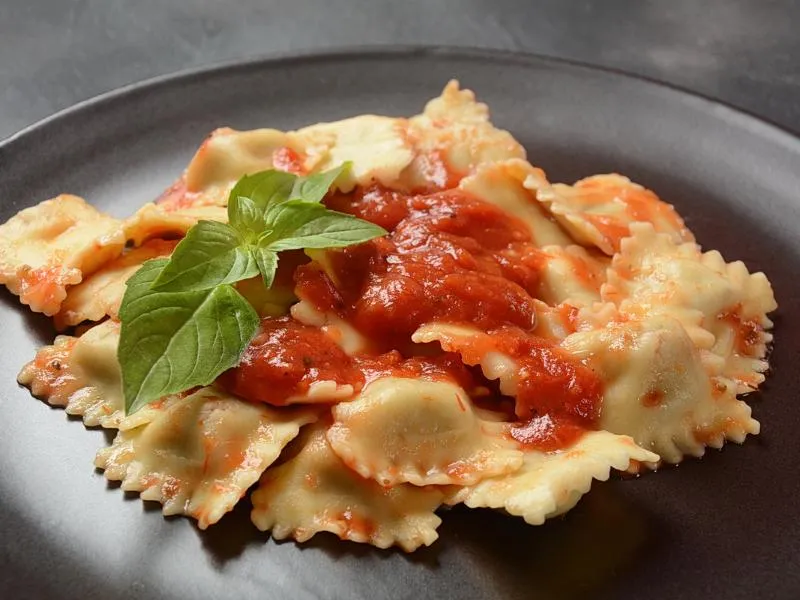Ravioli di Ricotta e Spinaci
Delicate pasta pillows filled with creamy ricotta cheese, spinach, and aromatic herbs.
👉 View Authentic Recipe 👈
About This Dish
Ravioli di Ricotta e Spinaci is a classic stuffed pasta originating from Northern Italy, particularly the Emilia-Romagna region, where pasta-making traditions run deep. These square or round pasta pillows encase a smooth filling of fresh ricotta cheese and wilted spinach, typically seasoned with nutmeg, salt, pepper, and sometimes Parmigiano-Reggiano for added depth.
The earliest documentation of ravioli dates back to the 14th century in the personal letters of Francesco di Marco Datini, a merchant from Tuscany. However, this ricotta and spinach variation became particularly prominent in Emilia-Romagna, where the combination of dairy-rich valleys and fertile agricultural land provided the perfect ingredients for this delicate pasta.
Traditionally served with a simple butter and sage sauce (burro e salvia), a light tomato sauce, or a restrained ragù, Ravioli di Ricotta e Spinaci exemplifies the Italian cooking philosophy of letting quality ingredients speak for themselves. The dish is often prepared for special occasions and Sunday family gatherings, though today it’s enjoyed year-round as a primo piatto (first course) in homes and restaurants throughout Italy and beyond.
🧑🍳 Analyzed by CucinaBot
Why This Dish Works
Ravioli di Ricotta e Spinaci creates a perfect balance through complementary flavors and textures. The mild, creamy ricotta provides a neutral base that carries the subtle earthy notes of spinach, while nutmeg adds aromatic complexity through volatile compounds that activate both taste and smell receptors. The thin pasta exterior offers a pleasant al dente resistance against the soft, yielding filling, creating a textural contrast that engages the palate with each bite.
Key Success Factors
- Proper Filling Consistency: The ricotta must be well-drained to prevent excess moisture from making the filling runny or breaking through the pasta
- Dough Thickness: The pasta should be rolled thin enough (around 1mm) to cook quickly but strong enough to contain the filling
- Proper Sealing: Ensuring ravioli are properly sealed without air pockets prevents them from bursting during cooking
- Gentle Handling: Cooking ravioli in barely simmering (not rapidly boiling) water prevents filling rupture and pasta tearing
Common Pitfalls
Many home cooks and non-authentic recipes overload the filling with excessive ingredients like multiple cheeses, breadcrumbs, or too many herbs that overwhelm the delicate flavor balance. Another common mistake is using ricotta that’s too wet, resulting in a soggy filling that leaks during cooking. The pasta should be flavorful on its own, not just a vessel for the filling or sauce.
How to Judge Authenticity
When reviewing recipes, look for these markers of authenticity:
- Simple filling with few high-quality ingredients (primarily ricotta and spinach)
- Presence of nutmeg as the primary aromatic in the filling
- Thin, egg-rich pasta dough made from 00 flour
- Restrained, complementary sauce that doesn’t overwhelm the ravioli
- Clear instruction to cook the pasta in gently simmering, well-salted water